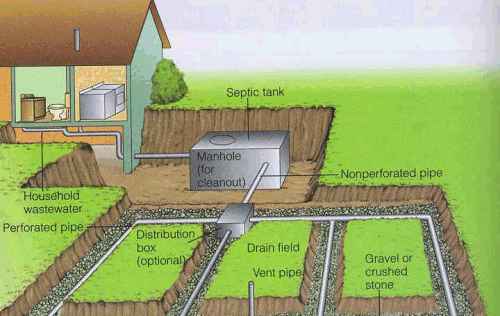 |
BC Septic Regulations
The information below is provided to help answer questions for Home Owners, Contractors, and Real Estate Agents. Anyone reviewing Turtle Tanks products should be familiar with the >ten good reasons< for using our products. Although the information below is believed to be current and accurate, it should be used as a convenient guide to installing a septic system in British Columbia. |
|||
| Current Status of the Septic Industry in BC A home owner in British Columbia is not legally allowed to construct OR repair a septic system. Any work performed on a system must be done under the supervision of a professional engineer or by a certified ROWP ( Registered Onsite Wastewater Practitioner). An ROWP must take courses specific to their involvement in the industry and there are certifications for septic system activities involved in: Planning and Design | Installation | Maintenance | Inspection Courses for these certifications are offered by government approved training centres. Registration of the certifications are by ASTTBC (Applied Science Technologists and Technicians of BC). The course content is based upon a Standard Practice Manual which is a large document that comprehensively states all things involved in the design, installation, and maintenance of septic systems for BC. Products used for the construction or repair of a septic system must meet specifications as outlined in the Standard Practice Manual. It is the job of the Planner / Designer to be aware of the latest specifications to meet government regulations. Steps Required The following is a sequence of activities which must be performed prior to installing a septic system and getting a building permit to proceed with construction of a new home. 1) Site Evaluation The septic system designer should review the property given full disclosure regarding the dwelling the system is to service and any known characteristics of the land. A home owner will generally fill out an Owner's Declaration Form as part of this process. Once a desired area for the drainage field has been identified, two test holes must be excavated to a depth of at least 4 feet; if a gravity system is proposed, then 6 feet. The soil is reviewed at various depths to see if there is a seasonal high water table or bedrock. If the test holes prove satisfactory then a test of the soils ability to filtrate effluent must be performed. This may be with soil analysis, a permeameter, or a percolation test. Traditionally the percolation test has been used, which is a hole 1 foot in diameter that is presoaked and filled about 12 inches with water. A timer is started when the level drops to the 6 inch level and the timer is ended at the 5 inch level. The rate is in minutes per inch. 2) System Design Based on the permeability and characteristic makeup of the soils a HYDRAULIC LOAD RATING (HLR) is chosen. The HLR is used to decide the size and configuration of the drainage field. The scaled drawing of the design is created which shows critical distances to property lines, water courses, buildings, and anything that may impact or be effected by the system. 3) Apply for a Septic System permit to local Ministry of Health, Public Health department. The application must include: A) Proof of ownership, which can be a current Tax Assessment or a Title of Ownership. B) Filled Out Record of Sewerage System stamped by an authorized person. C) Diagram / Sketch (to scale) of components used to construct septic system. 4) Receive the Approved permit This has been done electronically since 2017. 5) Install Septic System 6) Create ASBUILT drawing to show how system was actually installed. 7) File LETTER OF CERTIFCATION including ASBUILT and Maintenance Plan. 8) Home Owner is provided with copy of LETTER OF CERTIFICATION, ASBUILT DIAGRAM, and MAINTENANCE PLAN. We hope that this serves as a useful guide for installing a septic system in British Columbia.
For further Technical Information, please contact Jim Ripley (250) 863-8372
You can review information regarding our Do It Yourself Program for BC Residents Here. |
||||